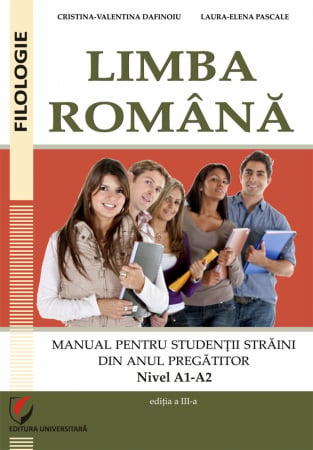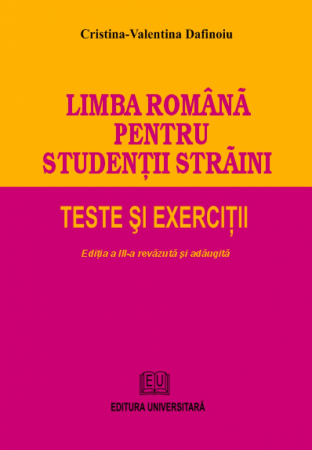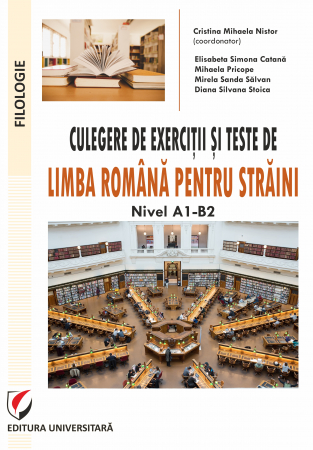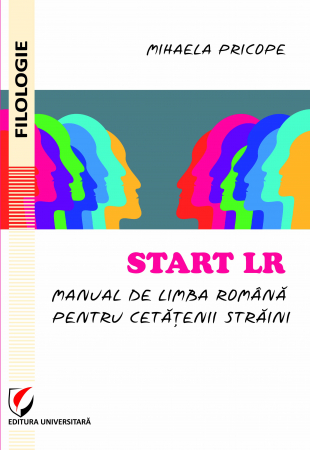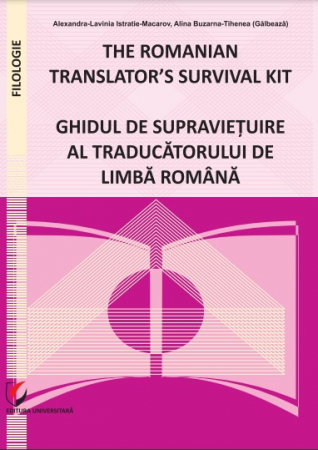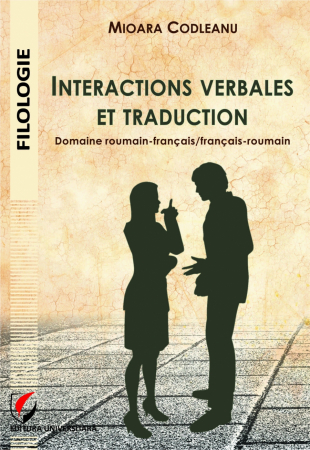Propuneri manuscrise: [email protected]: 0745 204 115
Urmărire comenzi Persoane fizice / Vânzări: 0745 200 357 / Comenzi Persoane juridice: 0721 722 783
6359.png) Joseph Conrad and Kazuo Ishiguro. From moral enclaves to moral restoration under modernist/postmodern eyes - Andreea Finichiu
Joseph Conrad and Kazuo Ishiguro. From moral enclaves to moral restoration under modernist/postmodern eyes - Andreea Finichiu
6359.png)
Editura: Editura Universitară
Autor: Andreea Finichiu
Ediția: I
Pagini: 104
Anul publicării: 2023
ISBN: 978-606-28-1613-1
DOI: https://doi.org10.5682/9786062816131
- Descriere
- Download (1)
- Autori
- Cuprins
- Cuvânt înainte
- Review-uri (0)
The moral restoration is a proposed counter-movement to the anaesthetic trends of 20th and 21st-century overexposure and normalization of violence, trauma, and oppression discourse and narratives. Here, ”moral” is not to be understood as a reactionary, dogmatic kind, but rather as sensitizing and self-regulating. We are never told what to do, but we are encouraged to ruminate on what we are told and, equally important, what is left unsaid.
This book aims to map the inception of the proposed counter-movement by referring to the Japanese Ma aesthetics of negative or empty spaces, the case of dystopia’s sensitizing ends, as well as a number of psychoanalytic and cross-literary observations in analysing Joseph Conrad’s ”Falk: A Reminiscence” and Kazuo Ishiguro’s Klara and the Sun, Never Let Me Go and The Remains of the Day.
-
Joseph Conrad and Kazuo Ishiguro. From moral enclaves to moral restoration under modernist/postmodern eyes
Descarcă
INTRODUCTION / 7
CHAPTER 1. On Modernism and Postmodernism / 16
1.1. Modernism / 16
1.2. Postmodernism / 23
CHAPTER 2. Subverting the Heart of Modernism. Moral Restoration with Joseph Conrad / 33
CHAPTER 3. Retrieving the Remains of a Moral Day. Moral Restoration with Kazuo Ishiguro / 44
3.1. Kazuo Ishiguro and the Concept of Ma / 44
3.2. Klara and the Sun / 52
3.3. Never Let Me Go and the Case of Dystopia’s Sensitizing Ends / 67
3.4. The Remains of the Day / 80
CHAPTER 4. Conrad and Ishiguro — What Makes Humanity? Bridging the Century Gap Towards a Common Goal / 87
CONCLUSIONS / 93
WORKS CITED / 98
This thesis is structured into three major parts: the first, addressing Conrad’s work with a focus on his short story “Falk: A Reminiscence”; the second, focusing on Ishiguro, his relation to the Japanese Ma aesthetics, and a selection of three novels: Klara and the Sun, Never Let Me Go, and The Remains of the Day; and the third, which places Conrad and Ishiguro side by side, offers a condensed analysis of the main intersection points between the two and sheds light into how their fiction works together towards the common goal I proposed. A preliminary theoretical chapter is meant to recapitulate the main characteristics of modernism and postmodernism.
The chapter on “Falk” opens the discussion about Conrad’s mode of expression. The blank interstitial space that separates narrator (and reader) from tale (here, Falk’s reminiscence is the segment of the tale that is of interest) is a nursery for the new, democratic morality, I argue, precisely because of the distance it puts between us and what is said. Distancing is achieved by 1. reminiscing (stylistic) and 2. the recurrent tendency to isolate the ‘horror’ and the ‘horror-struck’ victim from what constitutes home, homeland, and society understood as civilization (thematic). Through reminiscing, the past is “constructed or reconstructed to create new meaning,” as Ishiguro argues (qtd. in Duangfai 87), but it most notably involves some kind of self-reflection, and some scrutinising look behind. Through the selective sharing and/or suppression of the horror-inducing event, Conrad creates another kind of isolation, that of being “away from the truth of things” (Matz 220), which the ‘horror-struck’ character cannot (fully) disclose to the world. The rest of the world would never understand. And there is yet another form of distancing in the short story, symbolically rendered in the form of Falk’s profession — towing ships, the dragging motion. The tugboat itself, or its proximal space, can stand for a buffer zone, a place where no action need be initiated by the ones towed. From this limbo state, we can take our time to ponder on what we are told throughout the story.
In the subchapter dedicated to Kazuo Ishiguro and Ma, I look at Ishiguro’s writing through the lens of the Japanese concept of Ma — negative/empty space, or meaningful silence. Essentially, Ma stands for what is left unsaid yet which is substantial. From pauses in dialogue to the laconism on which haiku is based and the blanks intentionally left on the canvas in Japanese art (such as sumi-e), it can be said that it is one of the many forms of Japanese restraint. We populate this silence with our personal experience, hence the greater impression on us when piecing meaning together. Klara’s language is algorithmic, Kathy’s is elliptic, and Mr Stevens’s is artificial, sterile, self-conscious. These blank spaces in the discourse of each help, I argue, to connect to the reader’s sensibilities, making Ishiguro’s novels capable of stirring and challenging what makes up ‘standards of morality.’
The three subchapters that follow discuss Klara and the Sun, Never Let Me Go, and The Remains of the Day respectively in relation to their thematic takes on humanity. Aesthetically, I try to localize the negative spaces and show how they work to sensitize us, or, as worded in my BA thesis, how they “lift the lid of lethargy.” The novels seem to oppose the anaesthetic trends in an era of mass proliferation of violence, trauma, torture, oppression, etc.
The last chapter condenses this contrastive analysis and can be a quasi-manifesto for the new Moral Restoration movement. New, or newly reconstructed by the literary archaeology endeavour that this paper attempts to be. I consider Ishiguro and Conrad enclaves, on the one hand, because their work spans across more than a century, yet does not intersect — there is a roughly 60-year gap between Conrad’s last complete novel (The Rover, 1924) and Ishiguro’s first (A Pale View of Hills, 1982). The enclaves, most importantly, stem from their rather queer position against the backdrop of a moral agnosticism. By definition, modernism rejected the conventions of the past, including the exclusive belief in objective reality, which meant that nothing was moral or immoral anymore, but amoral because one thing comes off differently to me, and neither perception is more valid than the other. There was no more interest in the didactic scope of literature. Postmodernism abolished central, absolute meaning and favoured pluralism, but instead of discarding what came before, it revisited and re-/deconstructed the past. It does not tolerate moralism, but it has room for people’s takes on morality and, ultimately, for keeping the discussion open. The discussion can never be closed as per the postmodern policy of non-cancellation (all views are valid, except for the ones which imply silencing other views — a safety mechanism).
This brings me to my choice of title. If Conrad and Ishiguro are enclaves against these two literary and cultural movements, they are also moral enclaves. This is because they seep through (they topple their respective eras while employing their aesthetics; an opening) and erode them in the process. Moral Restoration is when we consider these effects. It is shaped by the enclaves. It is not reactionary, tracing back to the dogmas of classical antiquity, but it is an undercurrent of 20th-and 21st-century desensitizing, overstimulating-to-the-point-of-numbness trends. When we are shelled by a plethora of stimuli, we become less responsive in the long run. This movement then becomes a re-attuning endeavour.
This study came as a continuation of my BA thesis, Joseph Conrad’s Ethics and Aesthetics – Moral Decline at the Heart of Modernism, which, most notably, demonstrated how Conrad subverted the modernist canon by making use of its own mechanisms. It discussed the ethical and aesthetic aspects of his work as an extrapolation of my findings while analysing Heart of Darkness and “Falk: A Reminiscence”. The premise had been that of looking into what seemed to be the liminal nature of his writings — the ‘tales of unrest’ at the border between the waning Victorian times and a waxing modernist era. What I then called “the era of norm conservation” and “the era of norm revocation,” respectively. Upon looking at Conrad’s aesthetics in the two works of fiction mentioned, I pointed the fine differences in how the tales were “rendered,” to use Conrad’s term (qtd. in Ciocoi-Pop 115), although, to the naked eye, they would seem very much alike, and understandably so. Heart of Darkness, a frame tale, unfolds as a transcription (carried out by the secondary narrator) of Marlow’s remembrance (also a narrator). Falk’s life-and-death experience is, on the other hand, reported by the unnamed narrator — not recorded word for word, but rather a work of minimal adaptation (i.e. the narrator minds the changes to third-person narration and indirect speech). “In both cases,” I argued, “the two narrators’ accounts have an ‘insulation’ effect, to use Chinua Achebe’s term (qtd. in Bloom 78) – between the reader and the happenings of the tale a safeguarding space becomes manifest, which favours reflection and individual moral judgement”. Keeping this in mind, I then presented three levels of reading Conrad, mainly to see if his ethics (content) and aesthetics (form) do work in concordiam or as contraries. These were:
1. Conrad’s ethics and aesthetics work together in favour of his adherence to modernism (because “the thematic reticence [or decency] of [the] previous modes of literature seems to be missing in Heart of Darkness and “Falk”; reality is rendered with no reserve – a crude, unvarnished reality: the underlying corruption of imperialism, the atrocities one can resort to, degradation due to moral inequity or unjust distribution of power, the severity of rejecting or being unaware of what constitutes truth, etc. and because “the points of view are multiplied (double narrators), temporality is reordered, [and] meanings are enriched by the use of symbolism (‘darkness’, for instance, may stand for primitivism and the regress of society, but also for the mystery at the origins, for the repudiated truth or the moral decline of man, among other readings”.)
2. Conrad’s ethic opposes modernism, while his aesthetic (for the same reasons as in 1.) does not — they are therefore discordant, serving different purposes (because “refraining from a definite resolution, as it becomes apparent from the content, could well indicate a care on the part of Conrad for preserving morality in mankind. The lack of a verdict may in fact awake and train the reader’s moral conscience, which modernists passionately declined. […] [This consolidates] the theory that, with Conrad, there is a covert wish to tend to man’s moral sentiments”.)
3. Conrad’s ethics and aesthetics are concordant and subvert modernism “in its own arena” (because “[s]hould we consider the previously mentioned distancing effect – [the] ‘insulation’ effect – ascribed to the use of double narration (in Heart of Darkness), then the same humanitarian intent, supported by the ethics of Conrad’s texts, becomes apparent. By constructing a secure space, a climate where rumination is encouraged, Conrad may have taken notice of the moral stranding widespread at the time and, consequently, endeavoured to confront it”.)
Out of the three ways of making sense of Conrad, the third one I found the most nuanced and it represented my own contribution to perhaps furthering the discussion of (or opening new ones around) Conrad’s work. The conclusion I reached, then, confirmed and expanded on the proposition I made in the introductory note, that his work is to be seen as inhabiting the borders: “He [Conrad] may be the one writer of his time to have worked alongside modernism towards its own harsh exposal. He may have heeded the signals of a shattering civilization and endeavoured to revive moral sentiments among us all. More than a ‘writer of the sea,’ Conrad may have been the moral agent to dare defy the moral decline at the heart of modernism”.
It then became necessary for me to examine these findings more closely. During my undergraduate course in Contemporary British Literature, I was introduced to Kazuo Ishiguro and was personally moved by his treatment of human fallibility in The Remains of the Day. While the detail of the writer’s Japanese roots did in itself spark my curiosity due to a personal preference for the Nihon no culture, the idea of placing Ishiguro next to Conrad initially came from one thought, which was my first impression while and after reading his 1989 novel — that the book was a ‘clean’ one. This was with reference to Mr Stevens’s carefully laid out civility, to his dutifully carried out commitments (duty/devotion and self-sacrifice being a major facet of Japanese tradition), and to the overall cleaning-up-the-lentils procedure he abridges his emotions and thoughts by. He seemed to be abnegation incarnate. And, although Lord Darlington’s (and Stevens’s) moral dilemmas were more easily recognizable at the time as fertile ground for a follow-up study, I meant to investigate this further and see if both visions (Conrad’s and Ishiguro’s) could hold more intimate connections in the way of dislodging the unspoken embargo on morality (across the 20th- and 21st-century literary modes which famously dismissed it). This shall be the aim of this study.
If the scope of this study proves to be of interest, it may benefit from further analysis. As Ishiguro said in his Nobel lecture, “We may even find a new idea, a great humane vision, around which to rally” (16). This study could make us rethink the values we associate with modernism and postmodernism, and the effects they produced in society. If both cancelled the absolutist understanding of morality, there should be something proposed in its stead. Otherwise, it would seem as if they took after the imperialistic doctrine they kept away from. Whistler proposed a new moralism, what she calls “speculative moralism,” (2) or how-morality — centred on the approach rather than on the concepts of ‘right’ and ‘wrong’ as such. My proposal applies to Conrad and Ishiguro, but it would be interesting to see if other authors are proven compatible with the discussion here as well. Lastly, the brief examination of Klara and the Sun might be of particular interest given the recent publication the book (2021).

![Joseph Conrad and Kazuo Ishiguro. From moral enclaves to moral restoration under modernist/postmodern eyes - Andreea Finichiu [1] Joseph Conrad and Kazuo Ishiguro. From moral enclaves to moral restoration under modernist/postmodern eyes - Andreea Finichiu [1]](https://gomagcdn.ro/domains/editurauniversitara.ro/files/product/large/joseph-conrad-and-kazuo-ishiguro-from-moral-enclaves-to-moral-restoration-under-modernist-postmodern-eyes-485491.jpg)
